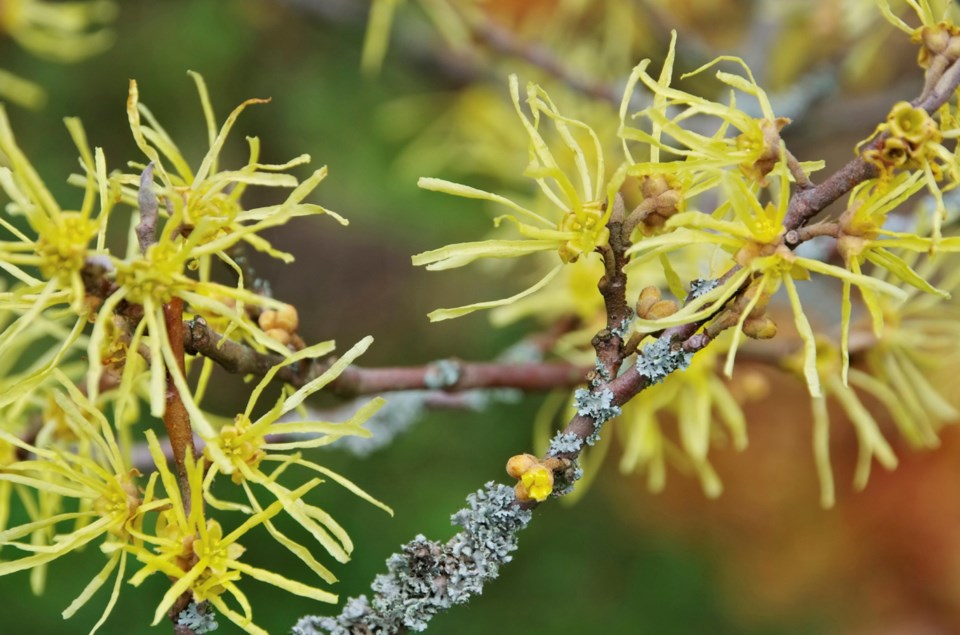Long before spring arrives, a joyful number of shrubs and trees start flowering when temperatures rise even a little. Aside from bright blooms, many are also richly fragrant and have a very long blooming period.
One of these is Viburnum bodnantense. This has clusters of small buds, which open a few pink flowers even before Christmas. The buds close tight in cold spells but unfold into heads of perfumed flowers in every mild period.
These are nice when grown within sight of a window. Viburnum is not a space-hog because its early growth tends to be vertical while later the tops of older branches do reach out a little. But it’s easy to control by pruning and removing one old stem at ground level every year or two. This triggers new stems to grow and replace them.
One of the most eye-catching trees in early spring is the witch hazel. Two supremely fragrant yellow-flowered varieties are dubbed “Arnold’s Promise” and “Pallida.” Any one of these can perfume an entire yard. But it’s important to know that not all yellow-flowered witch hazels are fragrant.
The orange-flowering witch hazel “Jelena” and the copper-red “Diane” are both non-fragrant, but very beautiful. Besides red flowers, Diane also offers copper-red leaves in fall. Eventually, all these witch hazels grow slowly into large trees.
Witch hazels are immune to the eastern filbert blight, but they do have a totally different failing —a tendency to produce suckers. This happens because all ornamental witch hazels are grafted onto a medicinal species, which produces tiny flowers in fall. Cutting witch hazel branches tends to trigger shoots from this rootstock.
Another beautiful January-flowering shrub is Camellia sasanqua. It’s evergreen and hardy to our climate although it prefers a sheltered spot and winter mulching. Flowers are mainly single in varieties from red (“Yuletide” is red) through to various pinks and white.
All three of these trees can be grown in large containers, though keeping them dwarf enough to fit, means periodically removing them from the pot and root pruning plus top pruning.
A beautiful and very fragrant shrub, which flowers about now is Daphne mezereum. The flowers vary from deep to pale pink (rarely white) and the bush usually stops at three feet high and wide. This Daphne needs good drainage and a lean diet. It’s hugely drought-resistant and grows easily from its bright red, poisonous berries though you have to be quick to get them before wildlife does.
This Daphne can fit well into a container for many years, but it’s best if its first container is also its last. That’s because being moved often kills Daphnes.
There’s usually a good reason why a plant is popular. Heathers give a great deal while demanding very little care. They like good drainage and acidic soil while needing little nutrition. In summer, they are extremely drought-resistant.
The winter-flowering heathers bloom in pink or white and flowers persist for many months. In order to keep looking compact, the plants need to be given an all-over haircut once the flowers have faded.
In containers, heather makes a good weed-suppressing, ground cover for taller shrubs. Because it’s evergreen it has a year-round presence.
Anne Marrison is happy to answer garden questions. Send them via [email protected]. It helps if you mention your city or region.



